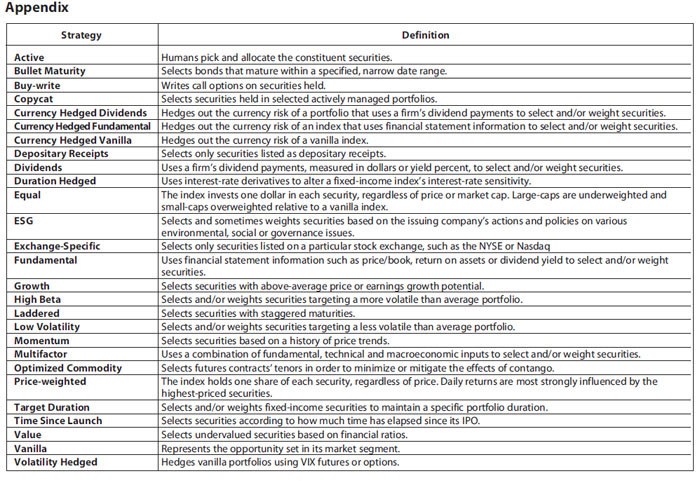The Best Commodity Play PlainJane ETFs
Post on: 27 Сентябрь, 2015 No Comment

Recent Posts:
The Best Commodity Play: Plain-Jane ETFs
Exchange-traded funds have certainly leveled the playing field for regular retail investors. Asset classes once reserved for institutional and uber-wealthy investors like convertible bonds, pipeline master limited partnerships and even managed futures are now available to us average Joes.
And perhaps no asset class has become more popularized than commodities.
Exploding populations are driving up the need for more energy, metals and other materials, as well as food. That demand as well as these assets usefulness in hedging against inflation and diversifying ones portfolio has naturally spiked interest in commodities. Wall Street has obliged, as the market now sports well more than 100 natural resource-focused ETFs.
However, most of these funds are gimmicky the average investor has no need for a triple-leveraged pure-beta coffee fund. In this case, the simplest focus on solid fundamentals might be best.
Dont Go Crazy
While ideally, an ETF would offer investors a cheap, straightforward and easy solution to gaining exposure to commodities, the latest batch of new funds isn’t cheap, straightforward or easy to understand.
Take the UBS E-TRACS DJ UBS Commodity Index 2-4-6 Blended Futures ETN (NYSE:BLND ) which only has around $10 million in assets. The exchange-traded note tries to navigate a problem called contango which occurs when current future prices are lower than contracts reflecting what prices could be a year from now by buying futures contracts out in various months and “blending” them to create the index.
ETFs based only on current prices lose money if a market is in contango because they have to buy the higher-priced, longer-dated contract and sell the cheaper spot month. So they are selling low and buying high. The United States Natural Gas Fund (NYSE:UNG ) has consistently been a loser for investors based on the issues of contango.
BLND is a complex product that might not even meet its objectives of smoothing contango. Not to mention, trading costs might counter any positives from its 2-4-6 futures blend. The fund is quite illiquid an average of 3,900 shares trade each day, and zero traded on the day I wrote this. Illiquid ETFs can trade at large premiums or discounts to their net asset values, as market-makers have difficulty meeting buyers with sellers. That creation/redemption mechanism is a critical function in how ETFs work and how they track their indexes.
BLND is just one example, and isn’t even the worst offender in terms of complexity and average Joe usefulness.
Easy As 1-2-3
The best opportunities for long-term investors lie in those easy-to-understand, popular funds that provide commodity diversification and low expenses.
The first thing youll want to do is go after a broad-based fund that owns the companies that physically pull the hard assets out of the ground.
The SPDR S&P Global Natural Resources (NYSE:GNR ) which splits its portfolio into thirds, representing agriculture, energy and metals & mining could be the best overall commodity-producer ETF available. The broad fund tracks 104 stocks, including integrated energy major Exxon Mobil (NYSE:XOM ) and mega-miner BHP Billiton (NYSE:BHP ). This provides exposure to a virtual who’s who of global commodity giants. Exposure to gold miners? Barrick Gold (NYSE:ABX ). How about agricultural processors? Monsanto (NYSE:MON ).
The ETF charges a reasonable 0.4% in expenses, and volume is brisk enough for investors to buy shares without any hassles. Additionally, GNR has more than $500 million in assets, meaning State Street (NYSE:STT ) isn’t going to close the fund anytime soon. Perhaps most importantly, GNR has delivered the goods performance-wise, returning more than 7% in 2012.
Once an investor is comfortable with owning the companies that produce commodities, they can move on to owning the physical goods themselves. I prefer a broad-based index approach.
The biggest ETF in the space is still the best. The PowerShares DB Commodity Index Tracking Fund (NYSE:DBC ) owns futures contracts on the 14 most heavily traded commodities including crude oil, gold, aluminum, corn and wheat. Its cost-effective and convenient, and has managed to outperform other broad commodity futures measures like the iShares S&P GSCI Commodity-Indexed Trust (NYSE:GSG ) and iPath DJ-UBS Commodity Index TR ETN (NYSE:DJP ).
The final step in all of this is to be tactical, too. Not every natural resource is going to have a great year at the same time. And that means getting a little active with your exposure.
We’ve highlighted plenty of opportunities in natural resources that could outperform over the longer term, and there are plenty of simple ETFs that track companies in those sectors. Think timber is going to outperform in 2013? The iShares S&P Global Timber & Forestry Fund (NASDAQ:WOOD ) offers targeted exposure to companies in the wood business. Like copper’s chances in the New Year? The Global X Copper Miners ETF (NYSE:COPX ) is for you.
Just keep it simple.
As of this writing, Aaron Levitt was long GNR and DBC.














